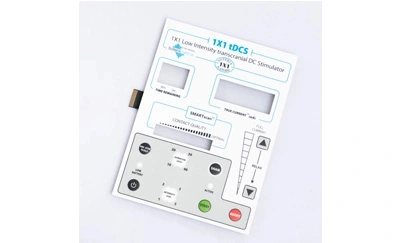
In today's tech-driven world, electronic devices play an essential role in our daily lives. From smartphones to kitchen appliances, most of these gadgets feature printed circuit boards (PCBs) with intricate designs. And at the heart of these PCBs, you'll often find a fascinating component known as a membrane switch. In this article, we'll delve into the world of KiCad membrane switches, exploring their significance, construction, and applications.
KiCad, an open-source electronic design automation (EDA) software suite, is widely used for designing PCBs. Membrane switches, on the other hand, are thin, flexible, and durable components that form a critical part of many electronic devices. These switches are made up of multiple layers, including a top graphic overlay, spacer, and bottom circuit layer.
A typical KiCad membrane switch consists of the following layers:
Graphic Overlay: The top layer, usually made of polyester or polycarbonate, features graphics and icons that indicate the switch's functions.
Spacer: This layer provides a cushioning effect and keeps the top and bottom layers apart. It is often made of materials like polyester, polyethylene, or mylar.
Circuit Layer: The bottom layer contains conductive traces made of copper or silver ink. These traces form a matrix of switches, and when pressure is applied to the graphic overlay, they make contact, closing the circuit.
KiCad membrane switches offer several advantages, including:
Low Profile Design: These switches are incredibly thin, making them ideal for compact electronic devices.
Durable: Due to their simple construction, membrane switches are highly durable and can withstand millions of actuations.
Cost-Effective: Manufacturing membrane switches is cost-effective, making them a popular choice for mass-produced electronics.
KiCad membrane switches find applications in various industries, including:
Medical Devices
Membrane switches are commonly used in medical equipment because they are easy to clean and sterilize. They often feature tactile feedback for precise control.
Consumer Electronics
From microwave ovens to remote controls, KiCad membrane switches can be found in a wide range of consumer electronics due to their reliability and sleek design.
Industrial Control Panels
In industrial settings, membrane switches are preferred for their resistance to harsh environments, making them suitable for control panels in factories and plants.
Creating a KiCad membrane switch involves careful design and consideration of factors like the choice of materials, layout, and user interface. Designers use specialized software like KiCad to design the switch layout and circuitry.
KiCad membrane switches are an integral part of modern electronic devices, offering durability, cost-effectiveness, and versatility. Whether in the medical field, consumer electronics, or industrial applications, these switches continue to play a crucial role in improving user experiences.
Are KiCad membrane switches waterproof?
KiCad membrane switches can be designed with waterproof properties, depending on the application's requirements.
Can I customize the appearance of a KiCad membrane switch's graphic overlay?
Yes, you can customize the graphic overlay with your desired graphics, icons, and branding elements.
What is the lifespan of a KiCad membrane switch?
The lifespan of a KiCad membrane switch can vary, but they are designed to withstand millions of actuations.
Are KiCad membrane switches easy to install in DIY projects?
With the right guidance and tools, installing KiCad membrane switches in DIY projects can be relatively straightforward.
Where can I learn more about designing KiCad membrane switches?
You can explore online resources, tutorials, and KiCad's official documentation for in-depth information on designing membrane switches.